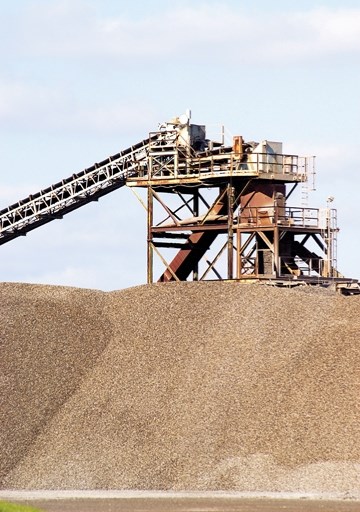Rocky View County’s (RVC) Aggregate Resource Plan (ARP) Stakeholder Advisory Committee convened for their monthly meeting last week with the hopes of defining some consensus recommendations that could be delivered to council by early March.
However, when it came to the agenda item that focused on human health and aggregate, the committee struggled to reach any sort of common ground at all.
Made up of six members that represent residential, agricultural, and aggregate industrial interests, as well as a chair, the committee is staffed with an arrangement of opinions that would seem to make building a consensus difficult.
Dale Soetaert and Monty McNair, the committee’s aggregate industrial members who represent the interests of gravel companies, differed from their colleagues during a lot of the debate around the gravel issue.
“We have to find a balance between gravel extraction and the needs and wants of residents…we have to work together and coexist,” said McNair, who also claimed that there was a feeling of a lack of trust between residents and the gravel corporations.
“It appears to me there is a mistrust that these jurisdictions are not doing the job…I don’t know why we don’t have faith,” continued McNair.
McNair also said that he respected the issues that RVC residents have with gravel extraction and all the side effects that come with it, but also noted that those issues are not exclusive to this county.
Soetaert and McNair seemed to be of the opinion that since gravel extraction is a necessity, and therefore inevitable, it could be done and put out of the way so that the land could be used for different things that might better serve communities.
“Let's get in and remove the non-renewable resource before final land use,” said McNair. “Don’t we have a responsibility to the whole community [to do that]?”
Soetaert admitted that a cause of the strained tensions between gravel companies and county residents is a lack of communication.
“We can do a better job at reducing the impact on the local community…I think we can do that,” he said.
Committee member John Weatherill, who represents residential interests, brought up that the committee had to be looking at what was best practice and to not just immediately assume gravel extraction was a given.
“It’s irresponsible to develop aggregate that's not required, in areas where it’s going to be most harmful to residents,” said Weatherill.
In meeting notes from the December advisory committee meeting chair Barbara McNeil wrote that county administration pointed out that a successful ARP represents the various interests of the county and that a “thoughtfully planned development [would] reduce conflict and look after health and safety [of county residents].”
Weatherill wondered whether the issue of gravel extraction could be mitigated by not developing gravel pits in areas that could pose high potential health risks; therefore sidestepping the problem entirely.
Soetaert jumped to say that he had heard Not In My Back Yard (NIMBY) sentiment attuned to what Weatherill suggested many times before.
“If we don’t produce the gravel within RVC or within close proximity, ultimately that aggregate resource will be transported through the county and the same impacts still exist,” said Soetaert.
Towards the end of the discussion, Soetaert said that he understood the residential concerns represented by Weatherill, and that he agreed with a lot of what he had to say. However, Soertaert also defended his industry and said that, “If there are no sand piles, there is no concrete, there are no sidewalks, and there is no asphalt.”
Tom Foss, an agriculture representative on the committee, reminded McNair and Soetaert that, “the ARP has to protect residents and it has to protect environmentally sensitive areas.”
“Our job is to identify areas of importance…If we can’t come to a consensus on where to put gravel pits, whose land we should destroy, [or] why we should endanger the water table, then it’s our job to say there shouldn’t be gravel,” said Foss.
As the members of the committee went back and forth and strayed further and further from consensus, chairperson McNeil reminded the committee that the County required a submitted report on the ARP by the beginning of March.




